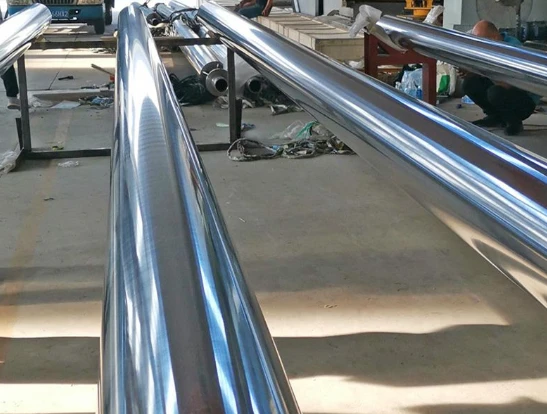
-
 Afrikaans
Afrikaans -
 Albanian
Albanian -
 Amharic
Amharic -
 Arabic
Arabic -
 Armenian
Armenian -
 Azerbaijani
Azerbaijani -
 Basque
Basque -
 Belarusian
Belarusian -
 Bengali
Bengali -
 Bosnian
Bosnian -
 Bulgarian
Bulgarian -
 Catalan
Catalan -
 Cebuano
Cebuano -
 China
China -
 China (Taiwan)
China (Taiwan) -
 Corsican
Corsican -
 Croatian
Croatian -
 Czech
Czech -
 Danish
Danish -
 Dutch
Dutch -
 English
English -
 Esperanto
Esperanto -
 Estonian
Estonian -
 Finnish
Finnish -
 French
French -
 Frisian
Frisian -
 Galician
Galician -
 Georgian
Georgian -
 German
German -
 Greek
Greek -
 Gujarati
Gujarati -
 Haitian Creole
Haitian Creole -
 hausa
hausa -
 hawaiian
hawaiian -
 Hebrew
Hebrew -
 Hindi
Hindi -
 Miao
Miao -
 Hungarian
Hungarian -
 Icelandic
Icelandic -
 igbo
igbo -
 Indonesian
Indonesian -
 irish
irish -
 Italian
Italian -
 Japanese
Japanese -
 Javanese
Javanese -
 Kannada
Kannada -
 kazakh
kazakh -
 Khmer
Khmer -
 Rwandese
Rwandese -
 Korean
Korean -
 Kurdish
Kurdish -
 Kyrgyz
Kyrgyz -
 Lao
Lao -
 Latin
Latin -
 Latvian
Latvian -
 Lithuanian
Lithuanian -
 Luxembourgish
Luxembourgish -
 Macedonian
Macedonian -
 Malgashi
Malgashi -
 Malay
Malay -
 Malayalam
Malayalam -
 Maltese
Maltese -
 Maori
Maori -
 Marathi
Marathi -
 Mongolian
Mongolian -
 Myanmar
Myanmar -
 Nepali
Nepali -
 Norwegian
Norwegian -
 Norwegian
Norwegian -
 Occitan
Occitan -
 Pashto
Pashto -
 Persian
Persian -
 Polish
Polish -
 Portuguese
Portuguese -
 Punjabi
Punjabi -
 Romanian
Romanian -
 Russian
Russian -
 Samoan
Samoan -
 Scottish Gaelic
Scottish Gaelic -
 Serbian
Serbian -
 Sesotho
Sesotho -
 Shona
Shona -
 Sindhi
Sindhi -
 Sinhala
Sinhala -
 Slovak
Slovak -
 Slovenian
Slovenian -
 Somali
Somali -
 Spanish
Spanish -
 Sundanese
Sundanese -
 Swahili
Swahili -
 Swedish
Swedish -
 Tagalog
Tagalog -
 Tajik
Tajik -
 Tamil
Tamil -
 Tatar
Tatar -
 Telugu
Telugu -
 Thai
Thai -
 Turkish
Turkish -
 Turkmen
Turkmen -
 Ukrainian
Ukrainian -
 Urdu
Urdu -
 Uighur
Uighur -
 Uzbek
Uzbek -
 Vietnamese
Vietnamese -
 Welsh
Welsh -
 Bantu
Bantu -
 Yiddish
Yiddish -
 Yoruba
Yoruba -
 Zulu
Zulu
Advanced Solutions for Mining Equipment and Technology Innovations in the Industry
The Evolution and Importance of GRP Mining Equipment
Mining has always been an essential industry, providing the raw materials necessary for construction, manufacturing, and various other sectors. As the demand for efficiency, safety, and sustainability continues to grow, the mining industry has seen significant technological advancements. Among these advancements, Glass Reinforced Plastic (GRP) mining equipment has emerged as a vital component in modern mining operations.
What is GRP?
Glass Reinforced Plastic, commonly known as fiberglass, is a composite material made from a polymer matrix reinforced with glass fibers. This unique combination gives GRP its remarkable properties it is lightweight, durable, and resistant to various environmental factors, such as corrosion and abrasion. These characteristics make it an ideal material for various applications in the mining industry.
Applications of GRP Mining Equipment
GRP mining equipment encompasses a wide range of tools and machinery designed to enhance mining operations
. Some common applications include1. Friction and Wear Resistance GRP is particularly useful in components subjected to high wear and tear. For instance, GRP conveyor belts and liners can extend the life of machinery while reducing downtime for repairs.
2. Corrosion Resistance Mining environments are often harsh, with exposure to chemicals, moisture, and extreme temperatures. GRP equipment, such as tanks, pipes, and valves, is highly resistant to corrosion, ensuring longevity and reliability.
3. Lightweight Structures The lightweight nature of GRP allows for easier handling and installation of equipment. This can lead to cost savings in transportation and labor, ultimately improving overall efficiency in mining operations.
grp mining equipment

4. Safety Enhancements Safety is a top priority in mining. GRP's non-conductive properties make it suitable for electrical applications. Additionally, its ability to withstand impact means that GRP equipment can enhance safety standards for personnel working in precarious conditions.
Environmental Considerations
As the mining industry faces increasing scrutiny over its environmental impact, GRP equipment plays a crucial role in promoting sustainability. The manufacturing process of GRP is often less energy-intensive than traditional materials like metals, leading to a reduced carbon footprint. Additionally, the durability of GRP means that less frequent replacements are necessary, thereby minimizing waste.
Moreover, GRP’s lightweight properties contribute to energy savings in transportation, leading to lower emissions. Mining companies that prioritize sustainability can benefit from incorporating GRP equipment into their operations, enhancing both their environmental responsibility and profitability.
Challenges and Future Prospects
While GRP mining equipment offers numerous advantages, there are challenges to its widespread adoption. For instance, the initial costs of GRP components may be higher than traditional materials. However, the long-term savings through reduced maintenance and increased durability often outweigh these initial investments.
Looking towards the future, the demand for GRP mining equipment is expected to rise. Innovations in material science may lead to even more advanced composites, enhancing the performance and versatility of GRP. Additionally, as industries increasingly prioritize sustainability, the appeal of GRP's eco-friendly attributes will likely drive further adoption.
Conclusion
In conclusion, GRP mining equipment represents a significant evolution in the mining industry. With its unique properties and numerous applications, GRP is not only enhancing efficiency and safety in mining operations but is also paving the way for a more sustainable future. As technology continues to evolve, GRP will undoubtedly play an increasingly important role in shaping the future of mining, benefiting both companies and the environment. Embracing this innovative material is essential for mining operations aiming to thrive in an ever-changing landscape.









